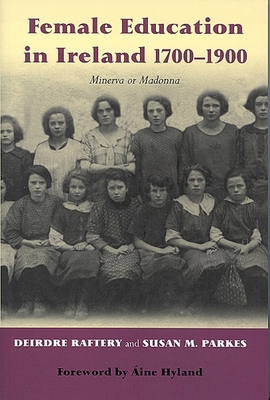Female Education in Ireland, 1700-1900
Sally Richardson reviews Female Education in Ireland 1700-1900 by Deirdre Raftery and Susan M Parkes, Irish Academic Press, ISBN 978 0 71652 7770, £19.50/€22.50 pbk

I MIGHT as well start by asking what education is for. The all-too-obvious answer is that it enables the individual to blossom and fulfil their potential while making them into a useful and productive member of society. However, as Pink Floyd pointed out, the authorities often regard 'education' and 'thought control' as pretty much the same thing. It is an unavoidable fact that education has often been used to control and contain those elements considered potentially dangerous and subversive and keep them in their allotted class and gender roles.
The situation in Ireland was complicated by colonialism. The British rulers did their best to deny Irish Catholics any sort of education at all for as long as they could, and there was a continual tug-of-war between British efforts to control Irish minds and Irish initiatives intent on subverting them.
There are a lot of fascinating insights in this book. For feminists, education provides women with ways of breaking out of traditional roles imposed on them by a male dominated society. All too often, though, education is has been to reinforce those roles and maintain gender divisions in society.
Poor children were considered a nuisance to be managed, and the education of the destitute was designed to enable them to support themselves (and therefore relieve society of the burden) and to inculcate religious rectitude. Conditions were harsh; eight out of nine children admitted to the Dublin Foundling Hospital and Workhouse in the 1750s died the same decade.
Gender divisions were not challenged; although girls' curricula overlapped with boys' to some extent, the emphasis was on domestic skills, which would prepare them for marriage or the few employment opportunities open to women.
The National School system was a means of maintaining British colonial control of education. It is significant that it was not implemented in Britain. Its secular nature was certainly laudable, although it was driven by fear of Catholicism rather than owing anything to a progressive secular agenda.
Things were a little better for middle-class girls. A thirst for education is a theme running through eighteenth and nineteenth century women's writing and demands for access to subjects usually reserved for boys and proper qualifications became more vociferous. Thanks to women like Isabella Tod, Margaret Byers and Anne Jellicoe, the campaign to open up higher education to women gained ground during the second half of the nineteenth century in Ireland, and it was compounded by the struggle to break the monopoly of Trinity College.
Medicine (a subject attracting now more women than men) was a profession women fought to enter. It is hardly surprising that many pioneering women doctors were overtly political. Kathleen Lynn, feminist, socialist and republican, took part in the Easter Rising. Ada English was one of the six women elected to the Second Dáil. Women doctors often tackled areas of medicine neglected by men; Lynn was a pioneer of child medicine and English specialized in mental heath.
The book is complemented by some attractive and well-chosen illustrations. I particular like the picture of little National School girls (reproduced on the cover) and the 'Nine Graces' - the first nine Irish women to gain degrees - artistically posed in their academic robes.
It's a thoroughly researched and comprehensive study. Each year's examination results brings criticism of girls for their audacity in outstripping boys at school and calls are made for an education system that is 'fairer' to boys. If boys regularly outperformed girls in the same manner it would be taken as proof that girls simply weren't up to the same level and were not worth educating. We are still struggling for equality.
Connolly Association, c/o RMT, Unity House, 39 Chalton Street, London, NW1 1JD
Copyright © 2008 Sally Richardson

